Nintendo's Labo Lineage
There’s a long and proud toy history behind the new concept
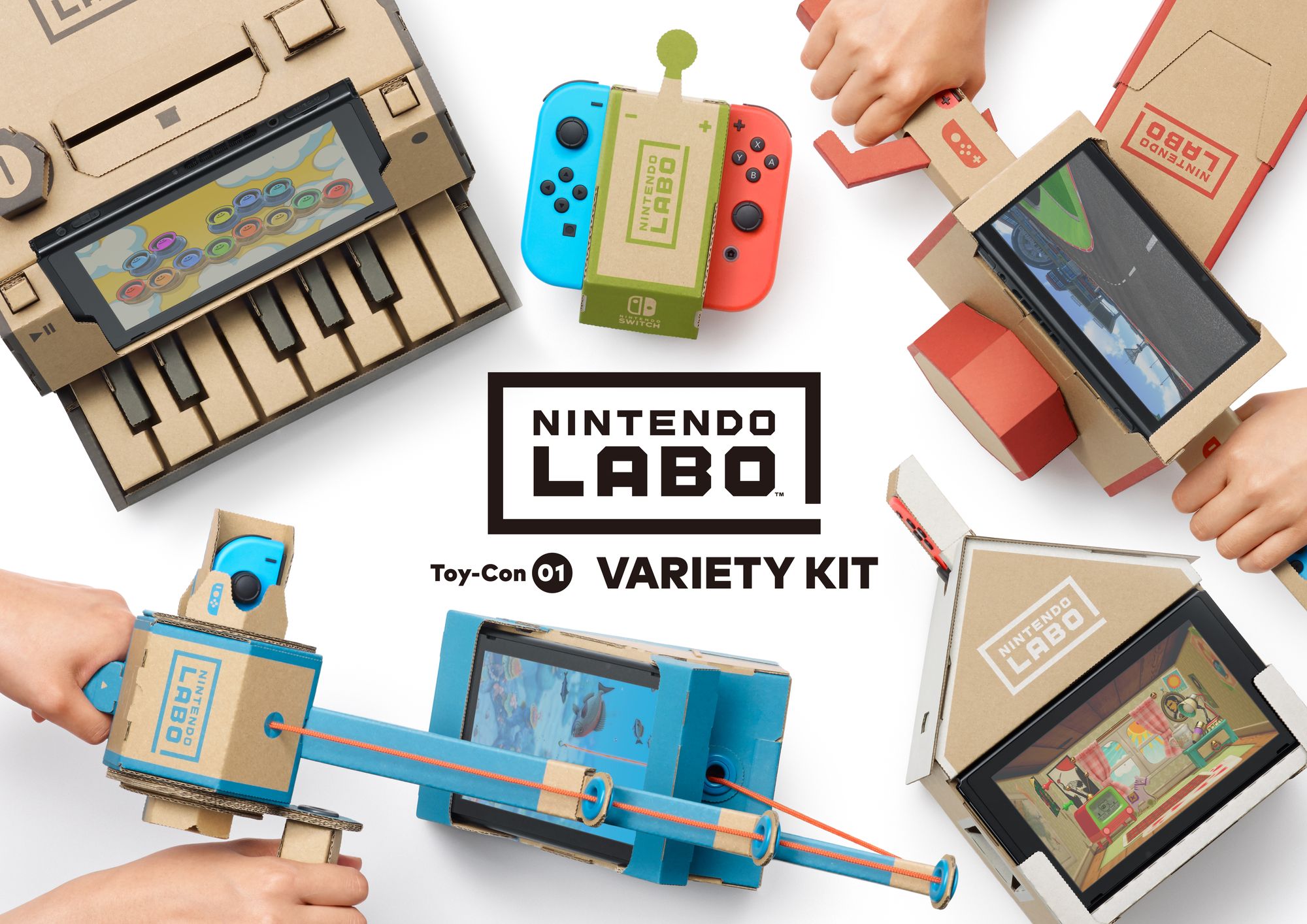
Nintendo teased a big reveal on January 18th, which led to all kinds of frenzied speculation about what might be unveiled. Was it going to be a new Switch game? A big DLC? Some new Amiibo?
All we really knew in advance was that Nintendo were promising something for the young and young at heart. Even those who speculated about some kind of physical product were no doubt surprised by Nintendo Labo, which is a unique fusion of physical toy and video game, with a liberal dose of DIY craft throw in for good measure.
Source: GameSpot.
My completely non-scientific reading of the various online reactions shows that, for the most part, people seemed pleasantly surprised (and in some cases, completely wowed) by the concept. Of course, there were the usual naysayers, including those fun-loving commentators whose favourite response to everything is to be as reductive as possible ($80? For cardboard?).
Now that the dust has settled just a little though, I thought it might be a good idea to take a step back and look at Nintendo Labo in context.
The toy that changed everything
Although Nintendo Labo itself is a new concept, there is something delightfully retro about it. An awareness of Nintendo history serves to underscore the idea that Labo actually has a long and proud genealogy that actually precedes Nintendo’s foray into the world of digital entertainment. Although digital entertainment has become Nintendo’s core business, it is a somewhat recent development given the company’s 128 year history.
Prior to making video games (and after being in the playing card business for over half a century), Nintendo turned its hand to toys. The first highly successful toy it ever released was the Ultra Hand, a simple-yet-clever product designed by the legendary Gunpei Yokoi. It debuted in Japan in 1966.
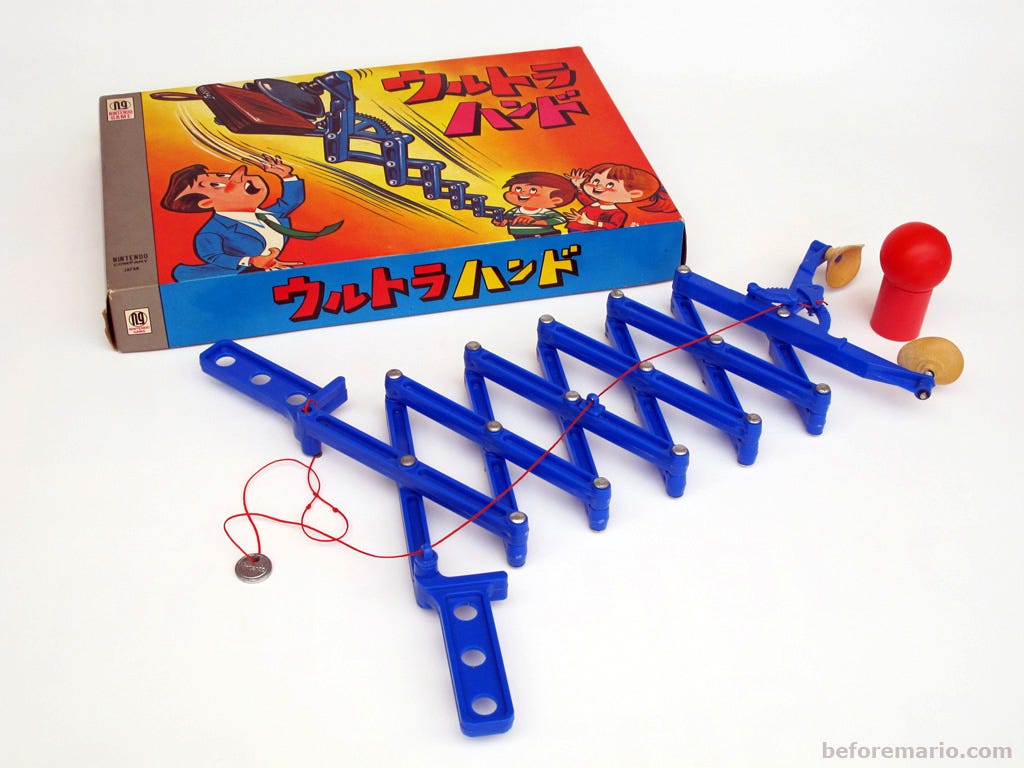
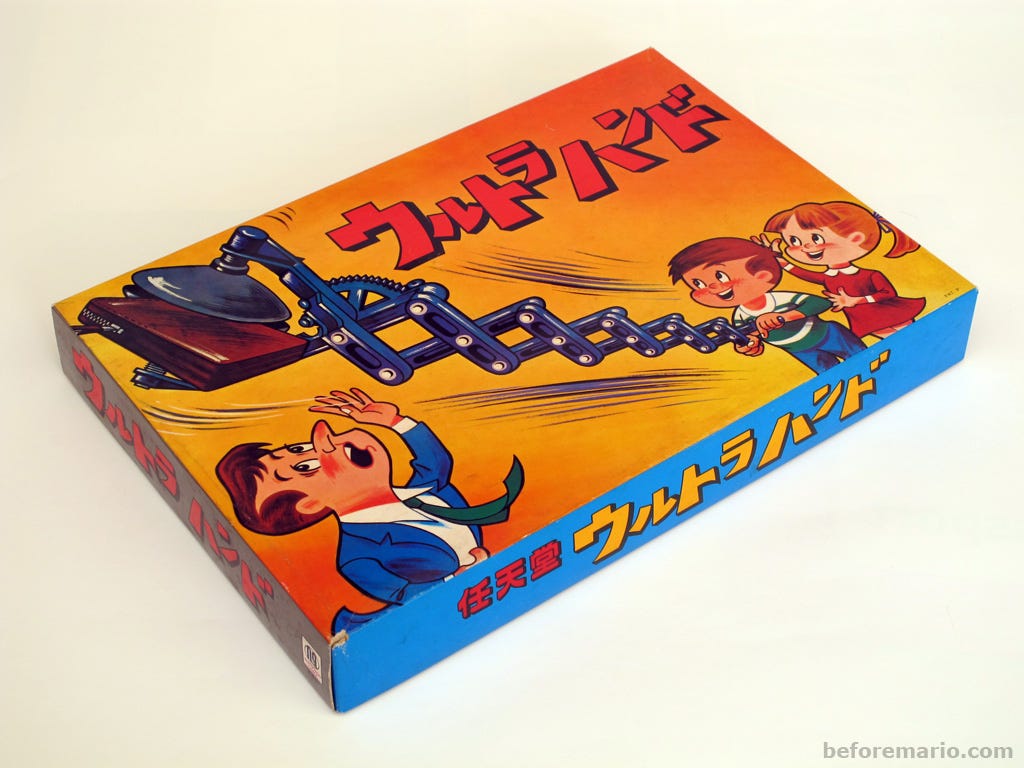
Chances are you’ve seen a million rip-offs of this product over the years. I still see toys like this popping up here and there — like some of Nintendo’s best products, it’s a simple-yet-compelling concept. Included in the box were several objects (balls and stands) to use as practice. I’m sure children all over Japan annoyed the hell out of their parents with this thing; the Ultra Hand ended up selling more than a million units, and ultimately became one of Nintendo’s first huge hits. It seems clear that the success of the Ultra Hand cemented Nintendo’s direction in terms of moving from playing cards into physical toys and then video game arcades, which ultimately progressed into home consoles.
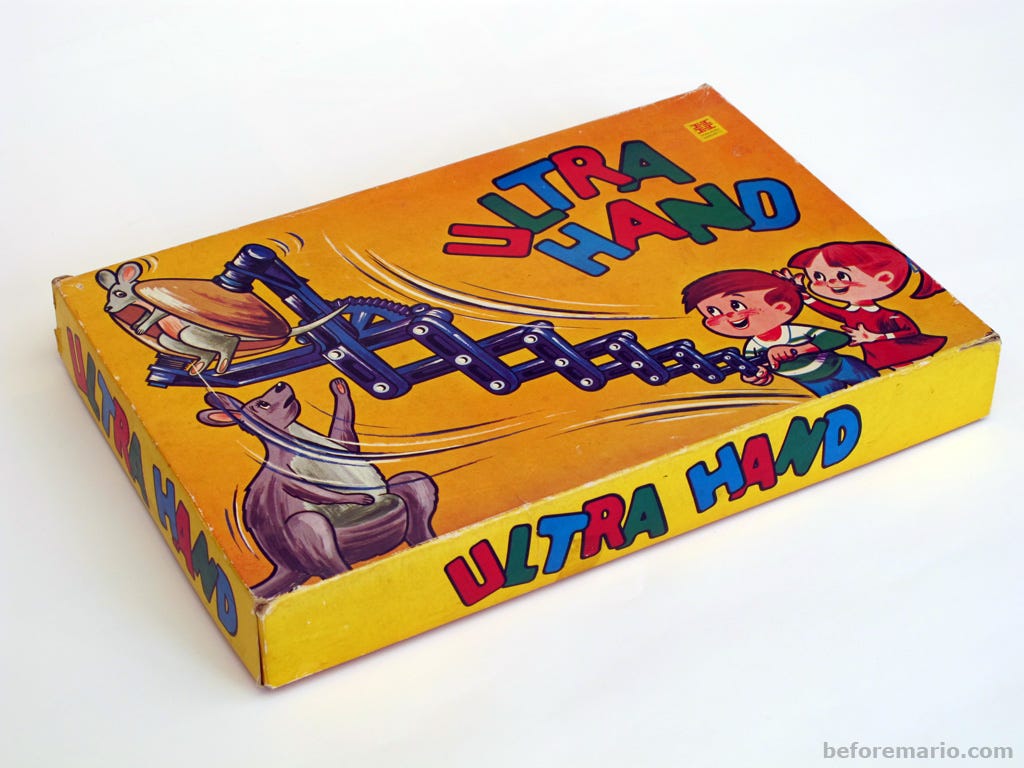
The Ultra Hand was primarily a Japanese product, although an international version was released — in Australia, at least. It was distributed by the strangly-named “Hong Kong Handarts” and featured mildly distressing box art (poor little joey!).
Man and machine
Nintendo went on to release a wide variety of toys throughout the ’60s and ’70s. Over time, the toys designs became more elaborate and began to incorporate simple electronics. My Car Race, released in 1965, contained a small electric lift that would raise four cars to the top of a downward-sloping track, allowing gravity to do the rest. Although the product was ultimately fairly poor quality (the electric lift was prone to wearing out very quickly), it’s clear that at least conceptually, Nintendo had begun to explore fairly unique toy concepts.
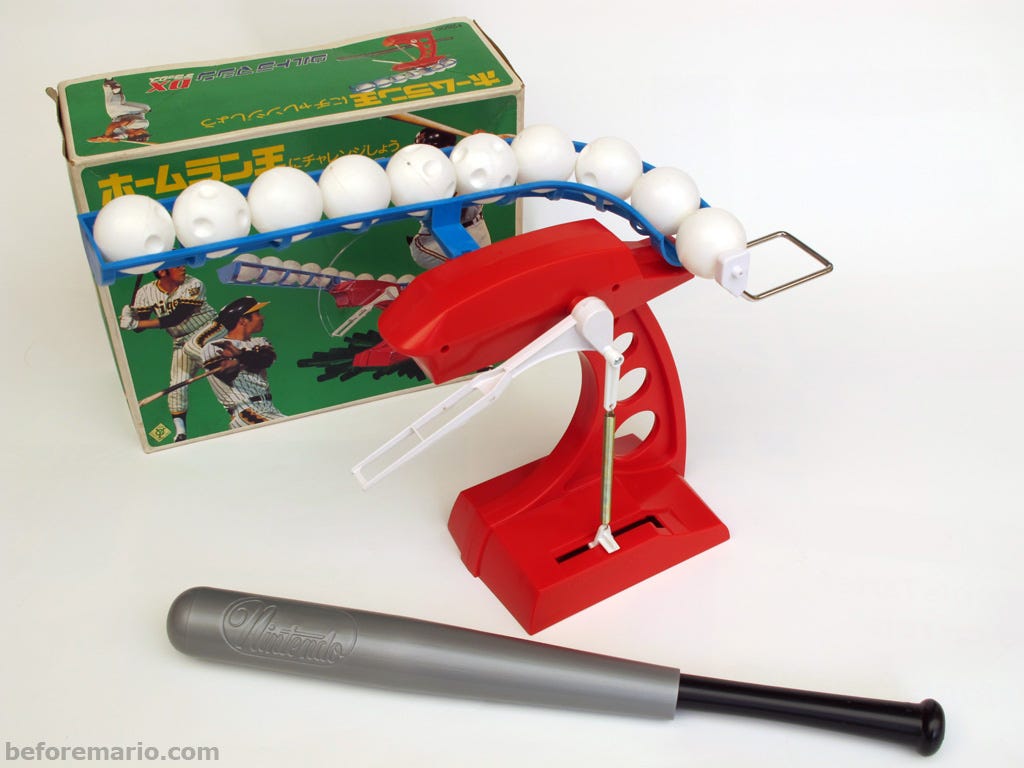
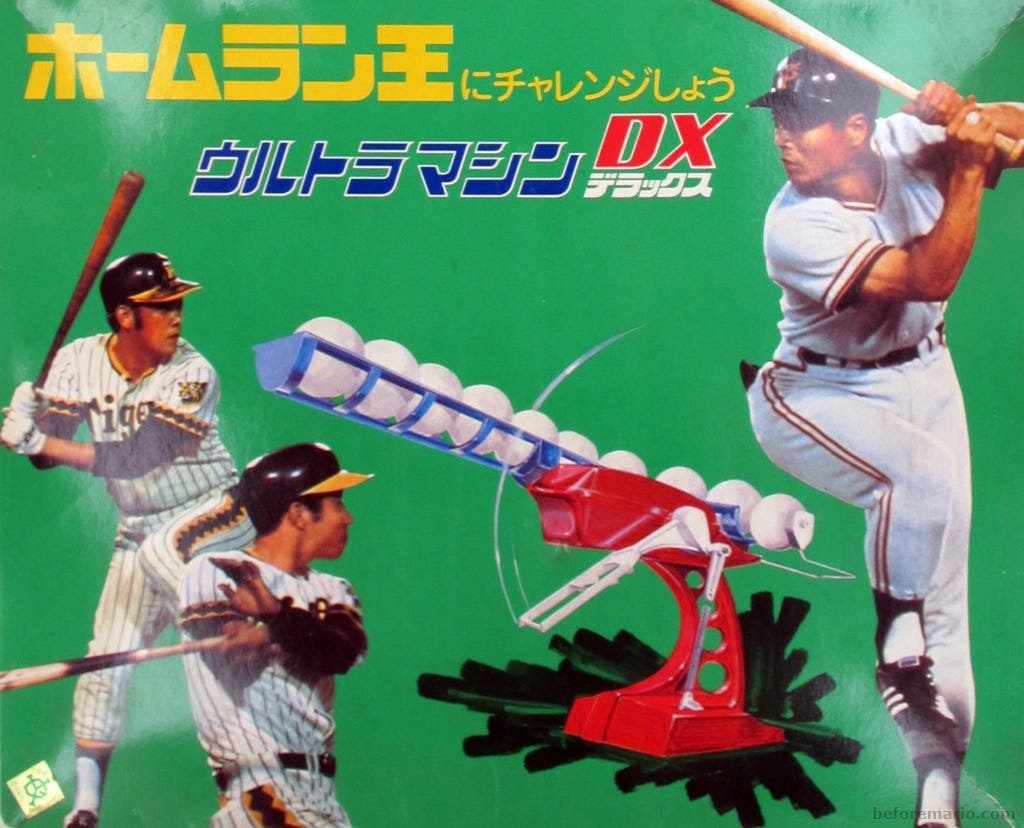
Later toys became even more sophisticated and they catered to a wide variety of tastes and interests. Products like the N&B Block Coaster (released in 1968) allowed kids to build their own tumbling bean racing game (the entire track could be constructed from various Lego-like pieces), and then later, the Light Telephone (released in 1971) — and which was pitched more directly at adults — allowed two people to point the device at each other and wirelessly communicate over a distance.
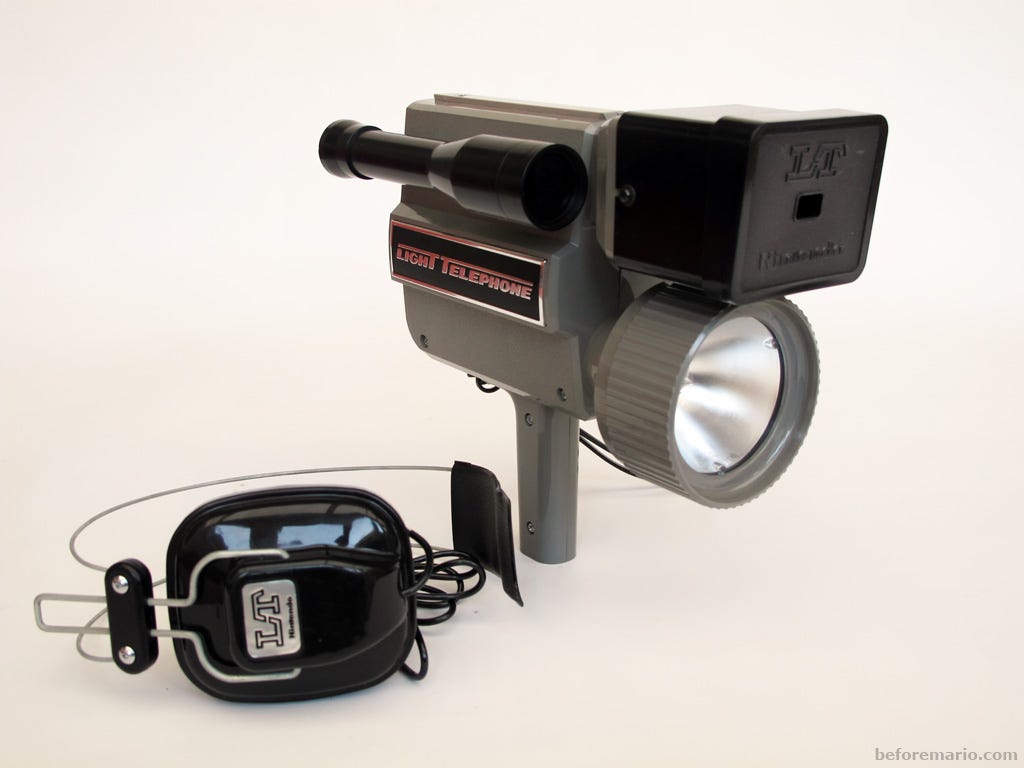
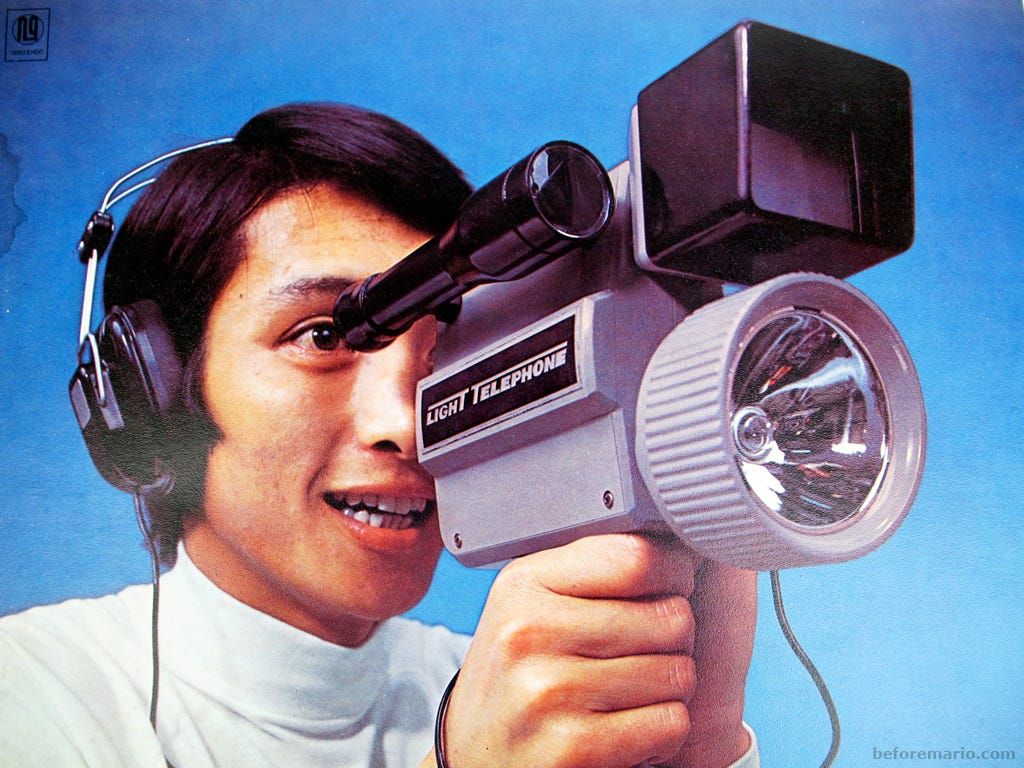
By the late seventies (1977 to be precise), Nintendo had begun introducing products that began to more closely resemble small computers rather than traditional toys. The first few Color TV Game units (I hesitate to say “consoles”) were co-developed with Mitsubishi Electric and were, essentially, different versions of Pong. They were, more or less, clone machines that provided very little variation in terms of experience — but they did help to get Nintendo’s feet wet in the world of digital entertainment.
Over time, Nintendo began to branch out and create genuinely unique experiences, which included titles like Color TV Game Racing 112, which was a very simple racing game that featured one of the earliest video game steering wheels released in the home, and which also enabled two player split-screen play.
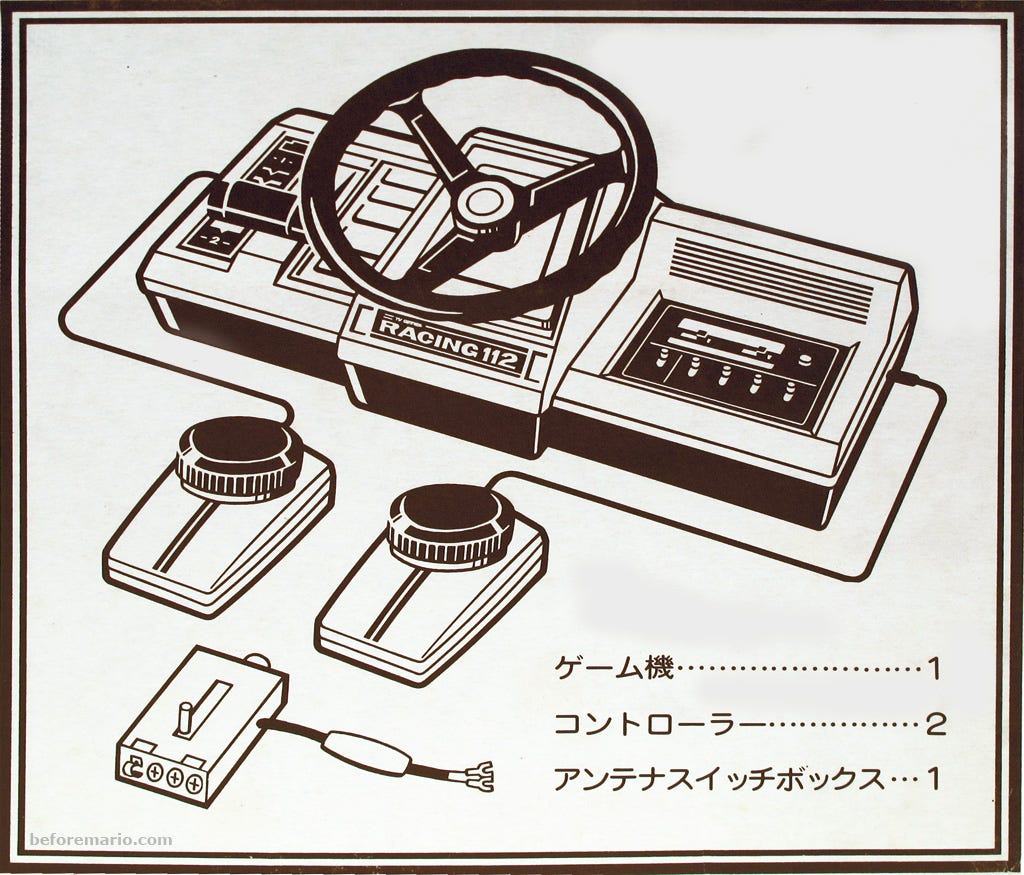
By the time the ’80s rolled around, Nintendo has become largerly focused on video games, especially the home console market. Perhaps for this reason, some fans were a little shocked by Nintendo Labo, possibly seeing it as something fairly antithetical to Nintendo’s focus on video game products. But when I saw Labo, I was excited in part because I felt like I was witnessing this wonderful fusion of Nintendo the toy maker and Nintendo the video game developer coming together in a single concept.
Your own Nintendo laboratory
What’s even more fascinating about Nintendo Labo, as a concept, is that Nintendo aren’t simply serving up a pre-made toy that interacts with a video game. This isn’t simply something you unbox and consume. Rather, Nintendo is inviting you to channel your inner Gunpei Yokoi — you are the ultimate Nintendo toy maker, and best of all, the hard parts are already done for you.
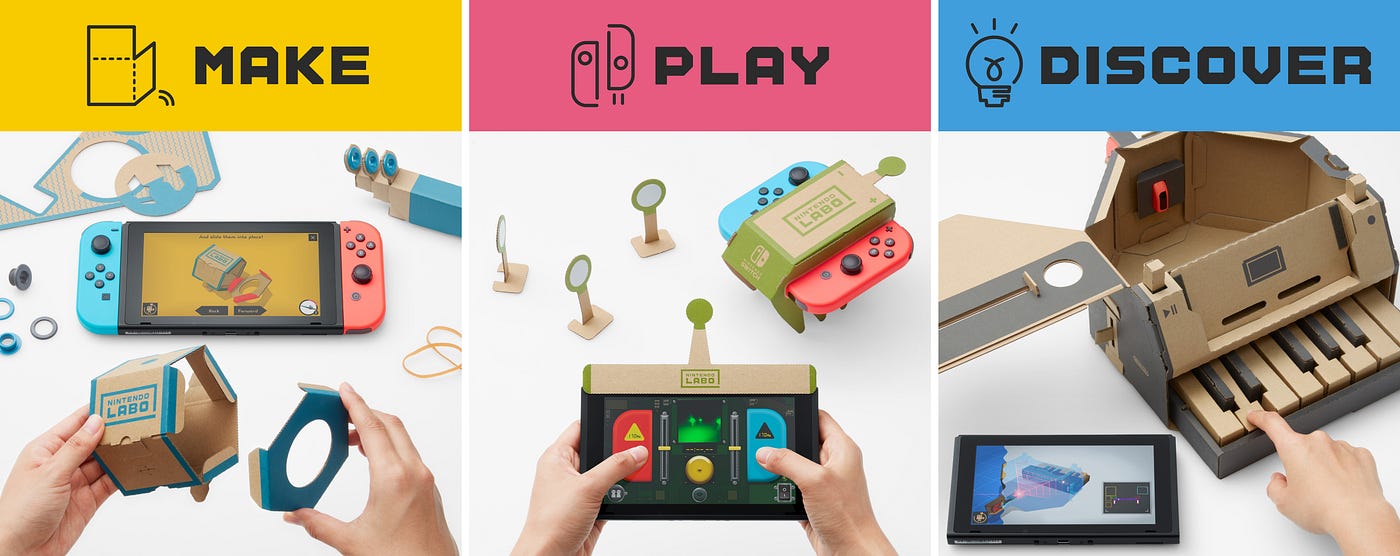
There are three core elements to Nintendo Labo: Make, Play, and Discover.
Make is all about taking the included cardboard sheets, popping out all the parts, and physically assembling various toys and accessories. The instructions for how to assemble each object are displayed on the Switch’s screen, enabling you to walk through the process step-by-step.
Play is the bit where your physical toy actually interacts with a game on the Switch. There are numerous examples of this in the reveal video, including everything from playing with your own RC car (pictured in the middle of the above image) to building a full-on robot suit and manipulating said robot on the screen (pictured below).
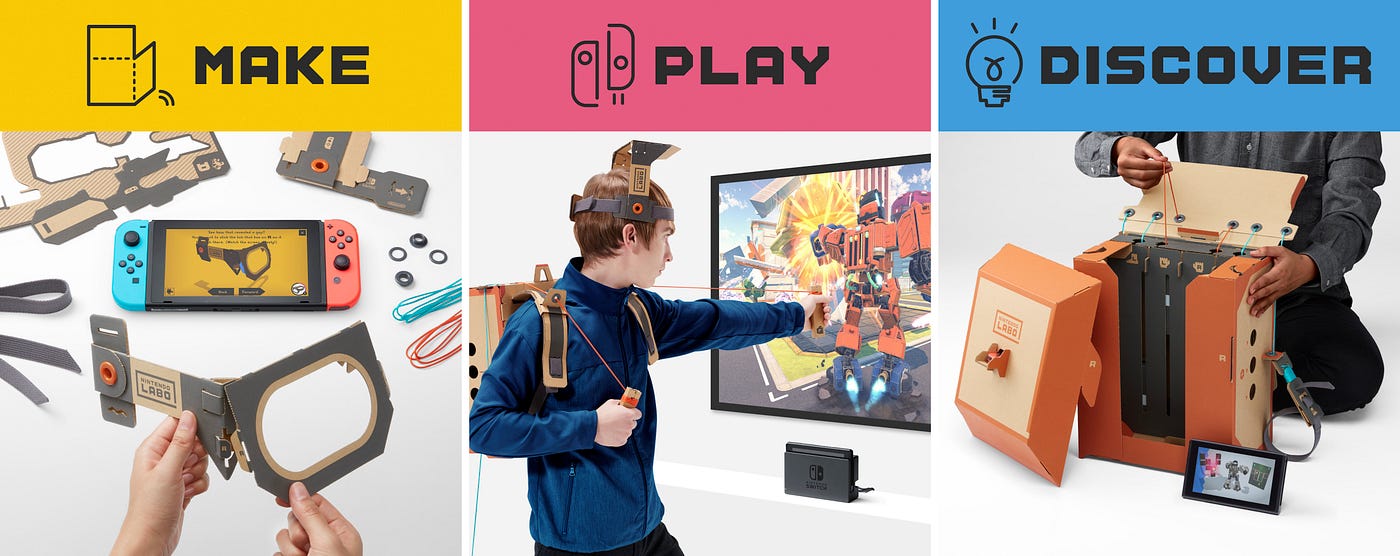
Discover is one of the most intriguing aspects of the whole experience — after having created your Labo toy and played with it, you actually get the chance to see how it all works. The Switch Joy-Cons are absolutely central to the whole Nintendo Labo experience — they are really the components that make it all possible. The combination of motion sensors, force feedback, and the unique IR sensor on the right Joy-Con combine with the cardboard accessories to create an experience that strangely occupies a space somewhere between video game, augmented reality, virtual reality, and arts and crafts.
At this point I’d be remiss if I didn’t mention an article by my N-Sider colleague, Brandon Daiker, where he discusses Nintendo Labo and how his analysis of the Joy-Con patent (from prior to the Switch’s launch) actually contained some remarkably prescient stuff (in that article, he specifically called out the IR sensor and how its ability to detect both distances and shapes could be used to leverage customisable controllers/accessories).
There will be two Nintendo Labo bundles at launch, the Variety Kit and the Robot Kit.

The Variety Kit includes numerous Toy-Con (the new name for the DIY cardboard accessories), as well as the associated Switch software.
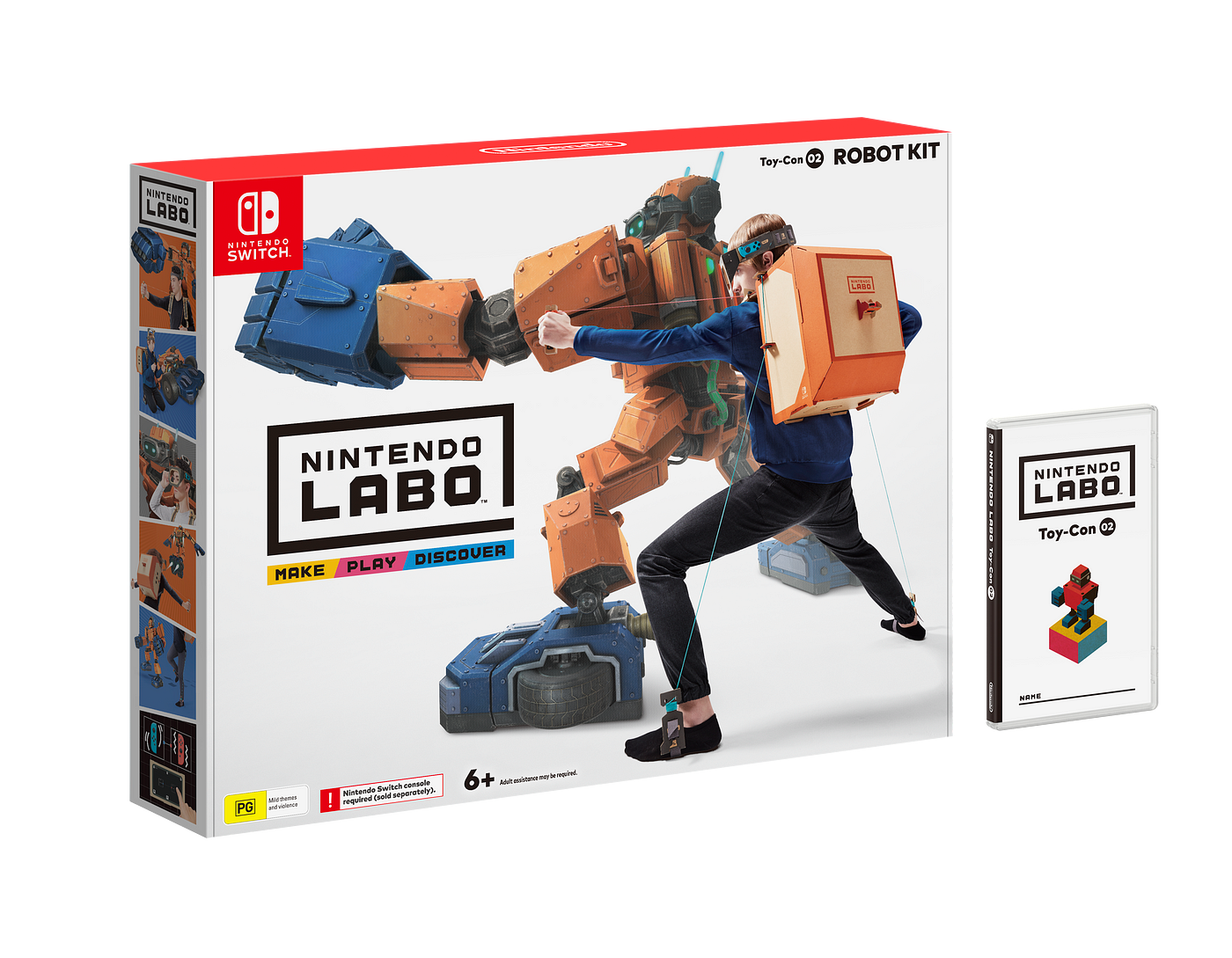
The Robot Kit has a single focus, which isn’t surprising given the complexity of the Toy-Con involved. Just looking at this initially, it seems that both the Switch game and the Toy-Con are significantly more complex than what you’ll find in the Variety Kit — this one might be better suited to older kids (or, er, adults…).
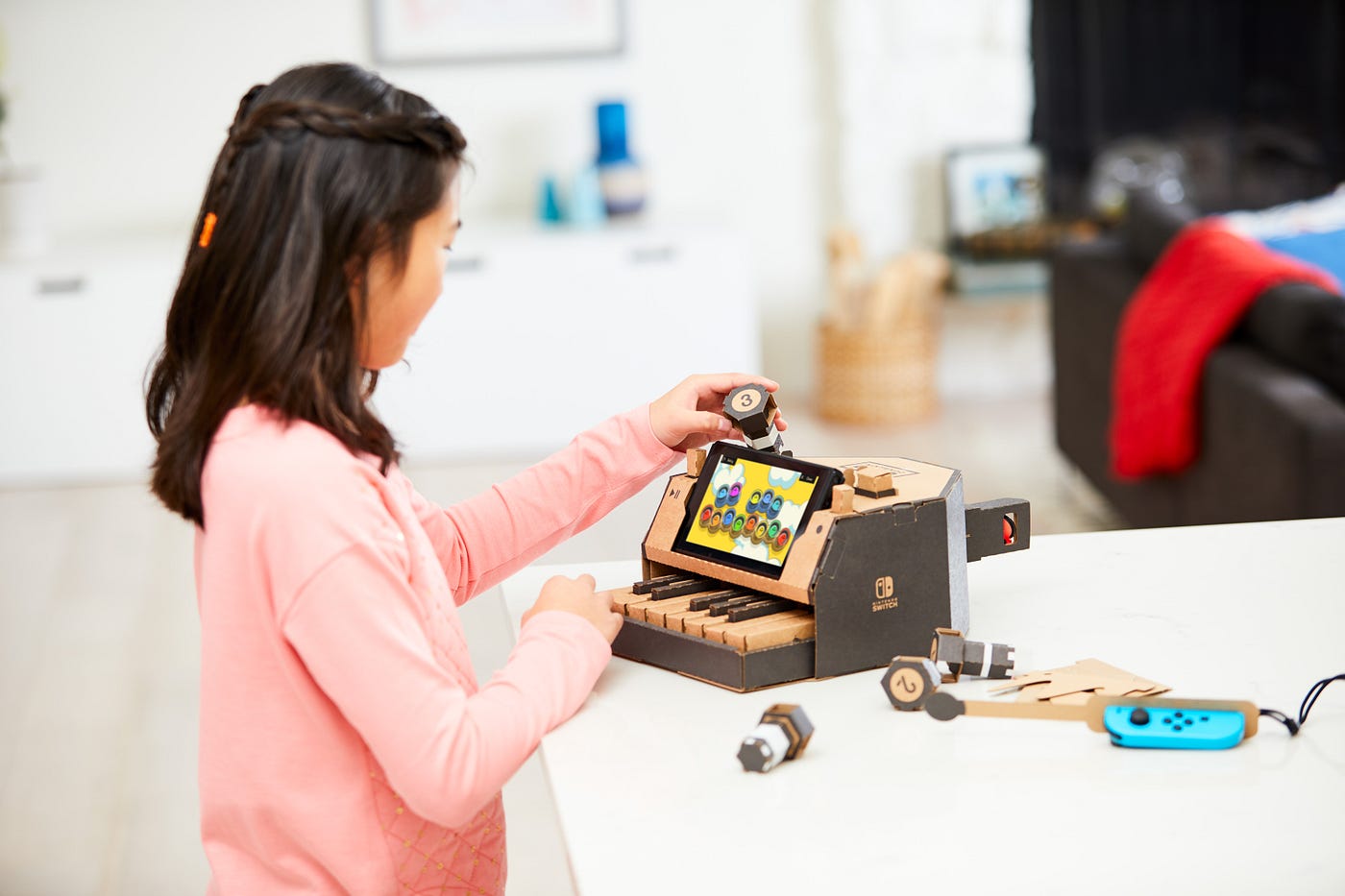
If you simply want to dip your toe in the water here though, it might make sense to start with the Variety Kit; that’ll certainly give you the broadest set of options, and the concepts are diverse enough to satisfy a wide range of tastes.
Nintendo Labo launches on April 20th this year. If we get the chance to have some hands-on time before launch, we’ll provide an in-depth preview here at Super Jump.
Media credits: beforemario. Please check them out, they have detailed images of some very rare Nintendo products.
